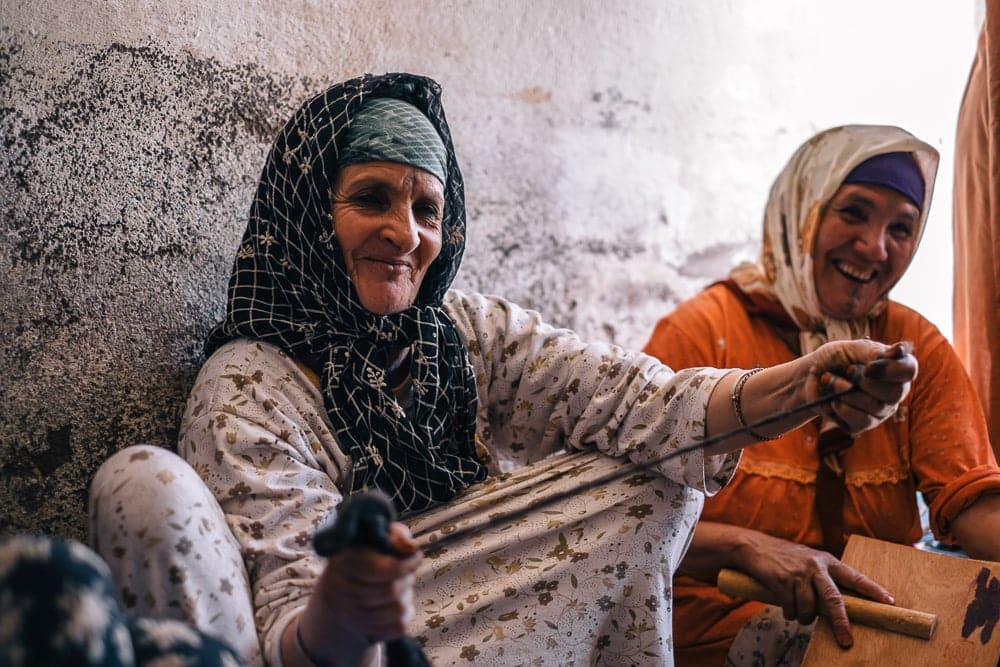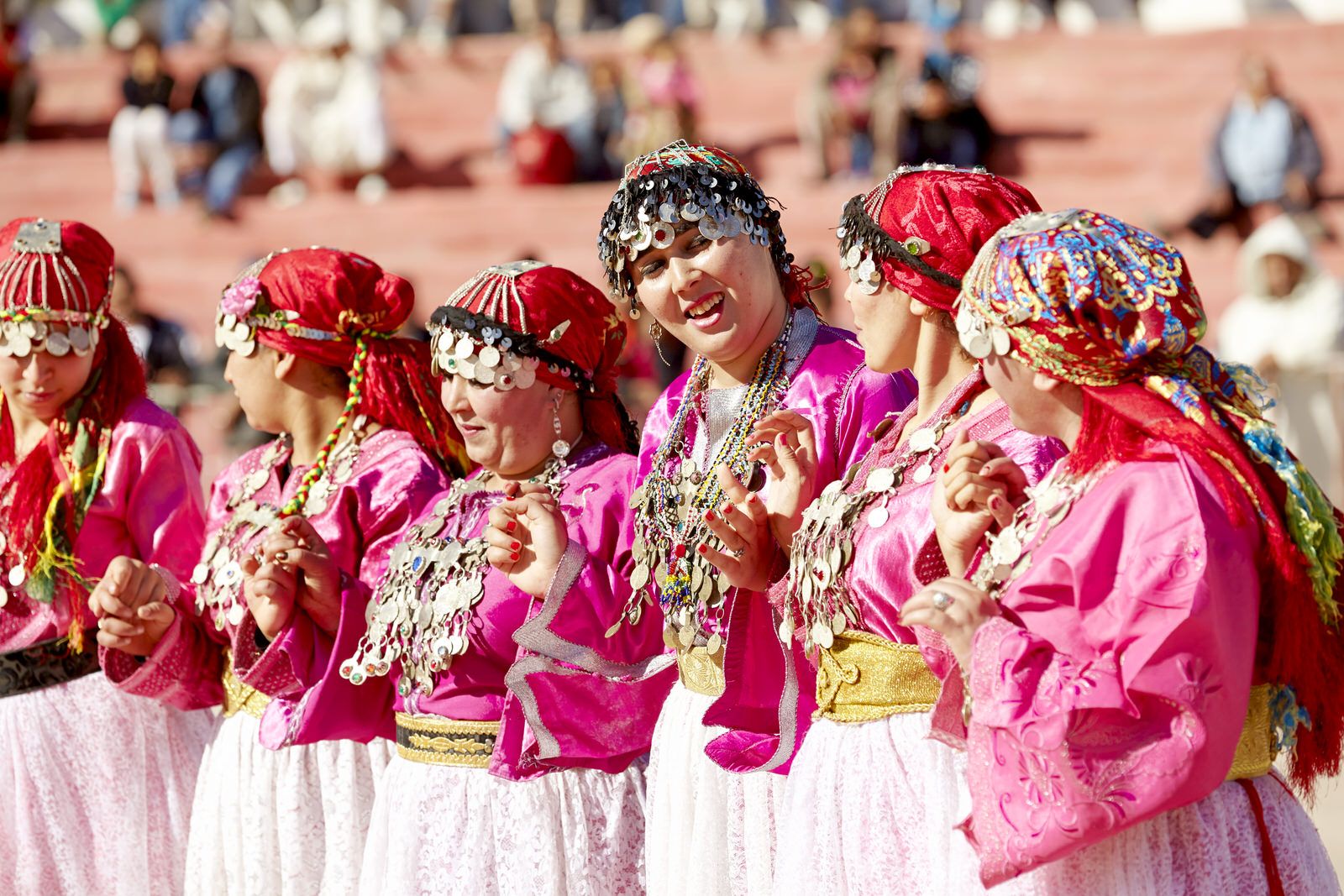[dropcap]M[/dropcap]oroccan women have played an essential role in preserving Amazigh language and culture, a role that has only very recently started to be fully appreciated. Indeed, the complex question of the point where ‘gender’ and ‘language and culture’meet, and the relationship between that meeting point and the general status of women, is still a subject very little discussed in Morocco, although the citizenship and status of women in this multilingual and multicultural country are closely tied in with the Moroccan languages and their usage.
Morocco is a country in which four principal languages – Moroccan Arabic, Amazigh, Literary Arabic and French – share the linguistic arena, but their socio-cultural status is worlds apart. That status is rooted in history insofar as historical facts (which feed into socio-cultural facts) have led to a situation in which Literary Arabic is more associated with men and Amazigh is more associated with women. For example, Literary Arabic has real and symbolic power in the religious, legal, political, administrative and media spheres, because of its status as the official language, the liturgical language and as the language of institutions, written knowledge and so-called ‘public’ affairs, in which men are better represented and have more voices and choices than women.
[ads1]
Conversely, until very recently Amazigh was typically an oral language, a maternal language and consequently one that was inevitably associated with women, especially rural women, in view of the high rate of illiteracy among women and of mass emigration of men to the towns.Throughout Morocco’s modern history, the fate of Amazigh has been closely linked with the fate of women and it is no coincidence that Amazigh and women were pushed into the background during the years following independence, nor that the current sensitivity towards cultural and linguistic rights is matched by a new sensitivity towards women’s rights.
In these circumstances, the inclusion of Amazigh in Morocco’s educational fabric and an improvement in the status of women in the country can only be of benefit to Morocco’s democratization and overall development. This view is justified both because history confers an undeniable legitimacy on Amazigh in Morocco, and because Islam as a cultural identity is not based on ethnic identity, regardless of whether that is expressed in racial or linguistic terms, or both.The Muslim community does not discriminate among ethnic groups (which explains the use of Arabic by very different ethnic groups throughout the world). This position is further strengthened by the fact that multilingualism is a fundamental element in Moroccan culture, which was born first and foremost of the country’s complex history and its geographical position at the junction of two continents.

The learning and use of Amazigh is closely associated with women; the oral literature (which is mainly disseminated in Moroccan Arabic or in Amazigh) is deeply feminine.
Morocco’s history was and still is built by men and women, and that process is conveyed in both written and oral languages. Oral literature is a national heritage which conveys in its very nature the uniqueness of Moroccan culture. It is time to preserve and to promote this literature, which, while often anonymous, nonetheless constitutes a collective memory reaching beyond the bounds of formal knowledge.
This oral tradition draws on the realms of the wondrous in which women escape from their traditional roles, proving that women have a knowledge which is not always the prerogative of men. In folk tales, for instance, patriarchal laws are often overturned.
[ads1]
Amazigh owes its survival first and foremost to women. In fact, its survival is an exception to the usual development of languages.We have here a language that is several millennia old, but which has never been the official language of a centralized state that might have determined its linguistic standards and conferred on it the validation of legal status; a language which has managed to co-exist with far more powerful languages, for example, Punic and Latin in the past, and Arabic, French, Spanish and English today. The standardization of Amazigh and its teaching go hand in hand today with the promotion of women – here once again we find the correlation between language and women.
Indeed, the promotion of Amazigh is a duty for all Moroccans towards a language which has, throughout its history, done much to unite the country in political and religious terms. At the same time, education and teaching also happen to be primary factors in the emancipation of women and their promotion in all areas. As well as playing a role in aiding both individual and collective awareness, education is an effective development tool, especially in the age of globalization.

The active participation of women in public affairs may enable the languages to be used equitably. Such participation could even change usage and attitudes towards the languages: it could demystify and reduce the gap between men and women as well as between the languages in use.
It cannot be said often enough that the promotion of ideas about the impact of education and language-teaching on the status of women is a historical duty, especially in a developing country. The purpose of this debate is to find a way to allow the ‘gender’ dimension to be taken into consideration in the sphere of education in order to reach the juridical and administrative levels.
In a nascent democracy such as Morocco, only a language policy that takes account of women’s socio-economic needs can be viable. It is true that the history of Moroccan languages may be told in different ways with different supporting arguments, but despite the heterogeneous nature of research fields and programs aimed at promoting women, language rights of Moroccan men and women are fundamental to all human rights. Moroccan women’s language rights rely on education as a tool for intellectual emancipation.Without it, women will remain on the edge of changing language policies and on the edge of the so-called ‘dominant’ languages in Morocco.
Moroccan women have preserved an entire heritage of oral literature, often anonymous since it belongs to the group, not the individual, as Chafik wrote in his work on Amazigh poetry. literature includes music, songs and dances, as well as stories, proverbs and riddles. The ancestral lifestyle of both men and women may be uncovered in this literature.
[ads1]
The oral tradition is a feature of Moroccan culture: Amazigh songs, for instance, employ both the major classical techniques of monodic song and polyphony and allow us to appreciate a music which, although it has evolved a great deal since its origins, retains an authentic vigour. After surviving a long period of neglect, it was rediscovered in the 1990s, and today young people are reclaiming this heritage.
The soul of Amazigh is indisputably expressed through song and music, the two components of an oral literature which has for centuries been passed down from generation to generation by Amazigh women in the mountains of Morocco as well as across North Africa.
Through oral literature women have always inspired the greatest respect in their communities. History tells us that Amazigh women shared in decisions concerning family,inheritance rights and education. The work of men and women was clearly differentiated, but was always recognized as being of equal value. In ancient history, Amazigh women occupied an important place and sometimes were at the head of kingdoms.
Amazigh language has indeed survived to our day despite the fact that Amazigh has never been the official language of a centralized state, has not been sustained by a holy book, and has had to with stand far more politically powerful languages such as Phoenician, Punic, Latin and Arabic. Today, we owe the fact that Amazigh has survived and is officially recognized, to the commitment of women to cultural issues at stake in our societies.
UNESCO LIBRARY 2007
The views expressed in this article are the author’s own and do not necessarily reflect Amazigh World News’ editorial views.

